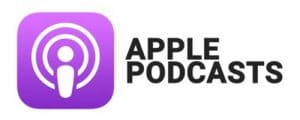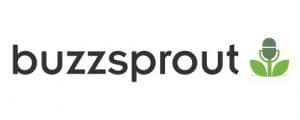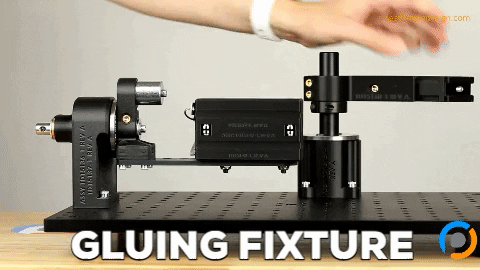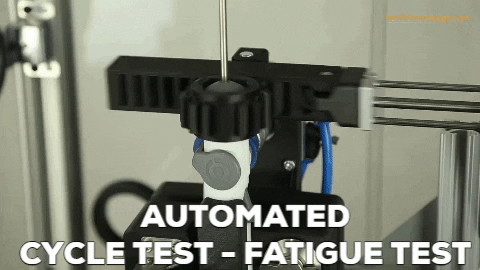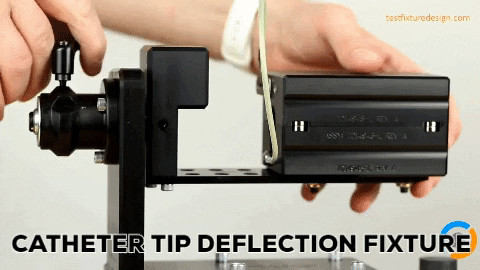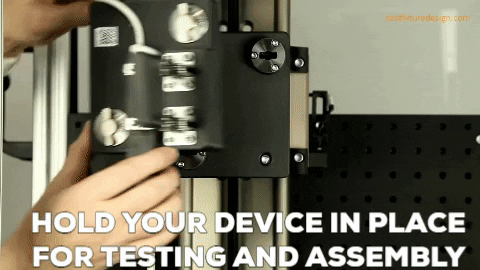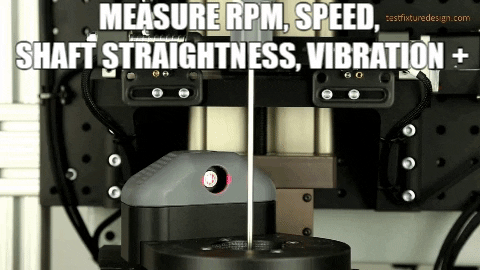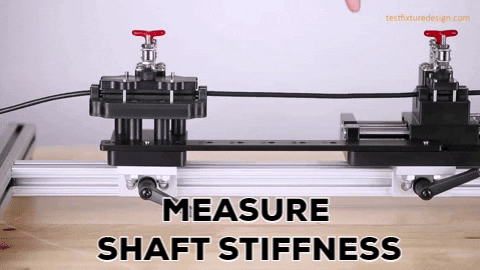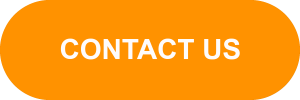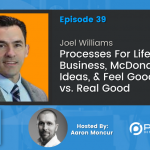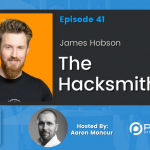Ted Newill Voice of the Customer, Using Questions, and the Technology Adoption Life Cycle Curve
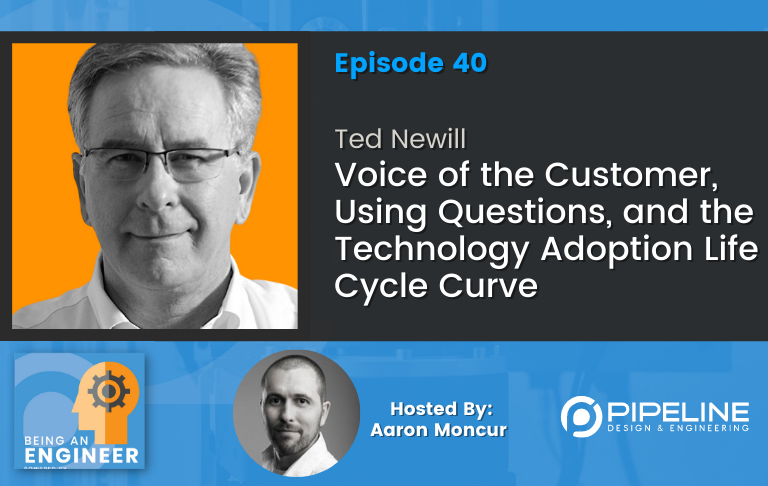
Who is Ted Newill?
Ted Newill is a business owner twice over. Firstly, for Medical Device Success, where he helps small to medium size MedTech companies with strategic planning, marketing and sales expertise, and the second company called SRD Vision. His team manufactures a testing platform that helps researchers and eye care professionals conduct visual and reading tests.
Ted has a business bachelor’s degree as well as a master’s degree in international management. In addition, he is the host of the Medical Device Success podcast.
EXPAND TO VIEW EPISODE TRANSCRIPTION
SUMMARY KEYWORDS
engineers, product, medical device, early adopters, idea, curve, people, company, chasm, commercialization, customer, ted, early, podcast, listeners, marketing, talk, learn, working, startup
SPEAKERS
Ted Newill, Aaron Moncur, Presenter
Presenter 00:00
The being an engineer podcast is a repository for industry knowledge and a tool through which engineers learn about and connect with relevant companies, technologies, people, resources and opportunities. Enjoy the show.
Ted Newill 00:15
I grew up with a dad that had a basement full of ham radios. He was an electrical engineer. And the the one question there the one answer he had to my questions was always well, why do you think it works that way?
Aaron Moncur 00:41
Hello, and welcome to another episode of The being an engineer podcast. Our guest today is Ted Newill, who is a business owner twice over the first being medical device success, where he helps small to medium sized med tech companies with strategic planning, marketing and sales expertise. And the second being a company called SR division where his team manufactures a testing platform that helps researchers and eye care professionals conduct visual and reading tests. Ted holds a bachelor’s degree in business as well as a master’s degree in International Management. Ted, thank you so much for being with us today.
Ted Newill 01:19
You’re welcome. Aaron, it’s a pleasure.
Aaron Moncur 01:22
Can you give us just a sec 62nd summary of both of your current businesses?
Ted Newill 01:29
Sure. So the SR division is a company that has its own product. It’s a product I licensed out of Austria from a Thalmic friend of mine. And it is a testing device that we make from with components that are off the shelf. So it’s really the software that matters, the software and the computer system in a really high resolution screen. And it’s not purchased that often. So I sort of custom make and sell several of them a year. But the other thing we do is we import a product from France, I’m helping a colleague of mine in France get a very nice diagnostic instrumentation launched in the United States. So that’s what SR division does. And then on the medical device success side, it is a consultancy. I’m a solo consultant, sort of a general contractor. I work with a lot of small, medium sized companies frequently in the early stage of their existence. So often, it’s a company that might be a year or two or three, even from you know, commercialization, getting clinical studies done and or regulatory approval. And then sometimes I help them afterwards. So it’s a consultancy. And if I need other agency help from somebody that’s really specialized in something like digital marketing, I know exactly who to go to. So that’s essentially a description of both companies. Um, plus I have the podcast, I forgot about that. The medical device success podcast. I think we’re coming up on our 58th episode this weekend. And we can talk more about that later.
Aaron Moncur 03:05
Now. Congratulations. Well, what? How did you get into the medical device success business? What was the path that led you there?
Ted Newill 03:17
I was a, I’m the son of an engineer, which is dangerous. And then I, you know, went to pre med school, I thought I wanted to be a dentist veterinarian, or a doctor wasn’t sure which so I started taking some pre med classes, wasn’t really that excited about it changed the business, I went to graduate school and right out of graduate school, I got hired by a division of American hospital supply. So there wasn’t any necessarily any path that you could say I had that I knew I was going to follow. I never thought in my life, I’d be in sales. And that was the first job I had in sales for this division of American hospital supply. So that’s how I got there. And I’ve been in medical devices ever since. Because it is, as your audience knows, it’s a very exciting business to be in, regardless of what community or medical specialty you’re involved in.
Aaron Moncur 04:14
It certainly is. You know, we talk a lot on this show about the development of medical devices and other products. But we don’t spend a lot of time talking about what happens after development to get those devices into the market. And that’s something that you have quite a bit of expertise. And can you talk about the steps involved in taking a new medical device to market and why the engineers who develop these products might want to be aware of those steps?
Ted Newill 04:44
Sure. And actually, the Steps Start before you go to market. And the one of the biggest mistakes new technology companies make especially if it’s a startup is not paying attention to the pre commercialization issues related to to marketing and understanding the market, so let’s just go back, somebody has an idea. It’s an engineer that’s involved in medical devices, and they have an idea. And they think this is the, the the germ of a new company, or it’s a doctor that comes to an engineer and says, can you make this, I think this is a great idea it can make become a very successful product. So you’ve got an idea, you have a prototype, perhaps you have a design, but it’s just an idea. And it’s the idea and only a few heads, you really need to go out early on and start exploring what we what we call the voice of the customer, and start bringing in other people, you know, use a nondisclosure agreement if you must. So the word doesn’t get out. But you really need to find out if in fact, you really do have a good idea, you know, something that has value that people believe will improve their outcomes when they’re doing surgery, or when they’re caring for a patient or something like that. So Voice of the Customer early on, and the another aspect of sort of related to voice of the customer is what you’d call health Economic Research. And that’s the it’s like a science. And it’s a way for people that specialize in this to go research the area around the solution that you think you’re providing. And there’s already people that have published papers, there’s already data out there that indicate that there’s probably a problem related to your solution. And you need to study that, to really understand and make sure that you are designing something that has the features that are truly going to solve the problems that you think can be solved. And or if your customers and in the voice of the customer works, say, we think you’re missing something and you need an additional feature, you need additional capabilities, that you can design those into the product before you get too far. And before you’ve wasted a lot of resources, and then find out that the market isn’t as thrilled about your idea as you are. So there’s some work that has to be done early. And then once you’ve you’ve done that work, you’ve got an idea prototype, if you’ve, you know, done some maybe inhuman testing or animal testing, and you’ve, you’re let’s say you’re ready for the regulatory process, then you need to make sure that your regulatory process is going to pursue the claims that you believe your solution offers. So that when you get to commercialization, after the regulatory process has, has gone down its path, when you get to commercialization, you can actually test those claims. And so, the other day, I interviewed health economics research expert, and one of the things we talked about was, we talked about the famous chasm, which is in Geoffrey Moore’s book Crossing the Chasm, which a lot of people don’t understand, but it’s very important. And we agreed that there’s probably a couple other chasms, and one of them is the chasm between regulatory approval and commercialization, because people don’t have those two things aligned. So that’s, that’s some of the stuff I think that has to be done early on. Key. Other things like key opinion leader development, you know, getting some advisors lined up, starting to develop early adopters early way before you go commercial, you want to be developing your early adopter audience, you can be capturing all this information. It’s legal to do. It is a kind of marketing. But there’s ways to do it. That is that is legal. And you can start capturing these people so that when you do get to commercialization, maybe you’ve got three or 400, people that are sort of eager to hear about it getting commercialized and ready to ready to help you. If you want me to keep going on this, I can.
Aaron Moncur 08:51
Let’s go back to the voice of the customer for a second. Especially if if I’m a early stage startup or even a physician inventor that’s working with an engineer doing the voice of the customer work sounds like it could be very time consuming and very expensive. Is that necessarily the case? Or are there bootstrap methods by which one can go about that?
Ted Newill 09:16
Yeah, there’s, there’s Bootstrap. I mean, it’s just the the people that are involved in founding the company can can do it themselves. They might want to get the help of somebody like me, you don’t have to get involved with a huge agency that’s going to put three or four people in the task. But just to make sure you’re asking the right questions, somebody that can help create a template, a guide and a script that you can follow. And then what you do so you go out and you talk to five people. Then you regroup and you say what did we learn? Well, we learned that we’re missing this, we’re hitting this right on they really liked this but they think we’re missing that we’re missing a B or C. Okay. Revise the script. Now you go talk to another five or 10 people and you can keep revising as you keep going to make sure you’re covering all the bases and getting the information you need. But it’s just phone call after phone call, maybe face to face virtual meetings if you’re going to demonstrate the concept, the product concept. And I really think that the people that are developing the product have to be involved in this, they need to be the ones talking to people and getting this direct feedback. So a colleague of mine, that is one of the listeners to my podcast, he has a great podcast called Mastering medical device, Pat cote, they just launched a product and in their voice of the customer. And I personally, I think this is sort of crazy, but they talked to 600, er, Doc’s. Wow, yeah. But that’s over a period of time, you know, because you’re testing it all the time, you’re going back over this voice of the customer.
Aaron Moncur 10:52
So you’re, you’re not an engineer yourself. But you have, you’ve worked with engineers, you’re CEO of a company that I imagine there have been some engineers along the way. In what capacity? Have you worked with engineers, and How has working with them been different than working with people in business? You know, sales, marketing, business type roles.
Ted Newill 11:19
Like I said, earlier, I’m the son of an engineer, you know, I grew up, I grew up with a dad that had a basement full of ham radios. He was an electrical engineer. And the the one question there, the one answer, he had to my questions was always well, why do you think it works that way? You know, I think engineers are analytical, and which is great. They’re very straightforward. they’re problem solvers. And they have a methodology, which is really terrific. I’ve worked with engineers and companies, especially in the design processes, were taking up a product that’s under development, through, you know, the different functions. So it starts out in research and development. And then it moves on into, you know, pre manufacturing and manufacturing, in addition to regulatory affairs and quality assurance, and so on. So you have these design review meetings. And where the engineers are involved, then, of course, marketing, and sometimes sales is involved. But frequently, it’s marketing. So yeah, I would say that, as engineers, then to the, to your listeners, you’re like I said before, you’re very logical and problem solving type of people. And you might not understand or appreciate all the time, the human element, the human element, and a lot of decisions. And perhaps, you might not want to put up with the politics and the company and some of the other stuff that goes on. And I can understand that. You just have to learn how to do that and learn how to listen, and think about what people in these other roles are trying to accomplish, and then communicate what you’re trying to accomplish to them. So that they can appreciate what you’re doing as well.
Aaron Moncur 13:08
In a sense, it it kind of sounds like you’re talking about empathy.
Ted Newill 13:12
Yeah. Yeah, empathy. It’s a kind of empathy. But it’s also, you know, being a good listener. And don’t let don’t let yourself get frustrated with some crazy demand a marketing person comes up with or a salesperson comes up with, because they have no clue what it takes to design a certain feature into a product. And they think, Oh, it can be done overnight, or it can be done in a few weeks, or they may not understand the regulatory implications of the change that they’re requiring, or they’re asking for. So you just have to be patient and, and, you know, be a teacher sometimes. Well, that’s an
Aaron Moncur 13:51
interesting point. Because oftentimes, the products, the devices that we as engineers develop, they are handed down to us from marketing. So if we find ourselves as an engineer in a situation where marketing comes to us and says, we’re going to develop this product, and here are the requirements, and here’s the deadline and all this stuff, and we take a look at it, we just think there’s no way that this is going to happen either on that schedule or within these requirements. How do you suggest engineers communicate with their their marketing counterparts to help them understand the the engineering reality of the project?
Ted Newill 14:32
I think again, it goes back to having to be a teacher. You create a development plan, you say, Okay, this is a very interesting idea. Let me put myself or one or two of my teammates on it, and we’ll come up with a development plan and we’ll be back to you in a few days or a week or whatever it takes to explain the plan, how long we think it’s going to take and what the resources are required to get it done. That’s what I think if you if you handle it that way, then you have an end you deliver that plan and you explain it to the marketing people or the other main operations people, then they have some facts in front of them that they never considered before. And it’s a very pleasant and diplomatic wake up call.
Aaron Moncur 15:22
I think that’s a very smart answer. I have noticed a little bit different situation. But when when I give a quote to one of my customers, and they push back, and they say, that’s way too much, there’s no way it can be, you know, there’s no way you can cost this much I did, something’s wrong here. And sometimes they’re right, you know, maybe I’ve missed something a requirement or something like that misunderstood. But oftentimes, what I’ll do is I’ll give them the worksheet that I used to come up with that quote, and it has every single activity that I think we need to do itemized with a number of hours next to it. And I’ll send them that, and most of the time, they look at it and they say, Oh, you’re right, okay, I get it, I get it, you know. And that’s the power of having a plan, some kind of written document that you can share with someone, it’s I think it would be easy for a marketer to hear an engineer to say, this can’t be done. And for the marketer to just say, Well, sure, can just try harder, you know, or something like that. But when there’s a plan that’s written down with some level of detail, then then it becomes much easier to, I don’t know, share one’s point with if you’re an engineer speaking with a marketer, so excellent answer there. Yeah. No. Well, I’m going to take just a real short break here and share with the listeners that Team pipeline.us is where you can learn more about how we help medical device and other product engineering or manufacturing teams, develop turnkey equipment, custom fixtures and automated machines to characterize, inspect, assemble, manufacture and perform verification testing on your devices. We’re speaking with Ted Newill, today, but President Ed, both medical device success and SR division 10. Ted, I find that most engineers don’t think about sales very much, but but to some degree, we all need to be salespeople to promote our ideas, whether it be within our own organizations, or to external customers, what tips can you share with engineers who are listening for for selling their ideas within their teams and organizations?
Ted Newill 17:33
Okay, so I would divide that into possibly working with external stakeholders, perhaps a customer, and then internal stakeholders, which be your teammates. And when it’s internal stakeholders, if you’re trying to sell an idea to them, you need to approach it from the standpoint of what their pain point is. So as an engineer, you have come up with a solution, or you have an idea that is a solution to some kind of problem. That’s why you think it’s interesting. And it makes a lot of sense to you. And you’re ready to go tell somebody that you have a great idea. But another approach might be to say, you know, when the reps are in the field, and they’re working with the doctors with our product X, and they’re in this part of the surgery, has anybody mentioned having an issue with Z and a, and the marketing person or the sales manager might say, Well, yeah, comes up sometimes. But the doctors are really good at working around it, we have a workaround for that. And then that’s an opportunity because now what you’ve said is you’ve you’ve identified a pain point, and the person is actually agreeing that there’s a pain point. Another way to do that would be to say, you know, I had one of our customers call me or I was in the field the other day, and I was watching this procedure, or I was watching this bedside application of, of a therapy or a treatment. And I noticed this, I noticed that they struggled with this or struggled with that. Is that something that we’d like to solve? You know, so what you’re doing is you’re trying to you’re asking a question, and you’re trying to ask a question to identify and get agreement on a pain point. And when you have that, then people’s defenses go down, because they’re agreeing with you. And they say, That’s really interesting. You think we can do something about that? Yeah. In fact, I sketched out something the other day, and I’d like to show it to you.
Aaron Moncur 19:40
That’s a great answer. Yeah. When you ask it as a question, you frame the whole conversation, almost in the other person’s terms, right? And then, and then they can almost think of the answers is partly their idea, which becomes much easier for them to buy into.
Ted Newill 19:55
Exactly. Yeah, so I think looking in then understand personas Um, the kind of person that you’re dealing with try to, you know, realize that you have people in different quadrants, right, A, B, C, and D, you know, is this an a personality, that you have to sort of butter up a little bit to get them to listen to your idea. And sometimes, again, the best way to do that is to question them, because an eight personality doesn’t want to hear that you’ve got a great idea. They’d love to hear that they have a great idea. So, so you know, think about what kind of personality you’re dealing with, what their object objectives and what their goals are, so that you’re both on the on the same page and ask questions as questions to get to where you want to go and try to keep the questions open ended. So it makes them talk about it.
Aaron Moncur 20:45
I love it. It’s great. You talk about something called the technology adoption lifecycle curve. Can you talk a little bit about what that is and how it’s used?
Ted Newill 20:56
Sure. The tech technology adoption lifecycle curve is something that has been made somewhat famous by Geoffrey Moore, who’s the author of Crossing the Chasm, which is a terrific book. And it’s been published, I guess, now, three times. And I’m rereading the most recent one, I read one of the early ones, but I’m rereading it. And I think actually, this last version is very, very good. It’s better than his other two versions. But the technology lifecycle curve is a curve where as, as a technology moves into the marketplace, it’s first utilized by innovators, then the next group that’s interested are called early adopters. And they that total amount that total between those two parties, on average, are 13 or 13.5%, of the total market. Then the next group where you get growth where the curve, the the adoption curve ratchets up, is called the early adopters. Some people call them the pragmatists as well. But early adopters, excuse me early majority, the early first, it’s innovators, then early adopters, then where the curve ramps up is early majority. And they’re also called pragmatists. And then as the the curve goes over the top of this bell curve, and you start coming down, then you have the laggards, the people that are sort of at the end of adopting a new technology. And the reason this curves really important is because the nature of each group is different. They’re all sort of important to each other. But they’re and there’s a gap between each group, because the way you communicate your value proposition to each group is a little bit different. But the biggest gap is between the early adopters and the early majority, where you really need to succeed for your company, and your idea and all your dreams to take off. That’s the biggest gap. It’s called the chasm. And that’s where a lot of companies fail and die, even with great ideas.
Aaron Moncur 23:02
Okay, I have two questions here, Ted. The first one is, does the technology curve apply equally across all industries? Like medical devices, consumer products, industrial equipment? And then actually, what why don’t we just address that one first, and then and then we’ll move on.
Ted Newill 23:19
Okay, so the curve primarily, is related to new concept technologies. So something that really hasn’t existed before. So the curve doesn’t necessarily apply to, let’s say, an improvement on a product that is already well accepted. And all you’re adding is like the iPhone, you know, you’re adding another camera to it, or a different size, or a different quality of glass to the front of it. And so now it’s the iPhone 13. The iPhone 13 doesn’t really go through the same type of curve as an absolute new concept, which would have been the iPhone when it first came out. So so that’s one thing, but it does apply across industries. There’s a little bit of controversy about it. Some people aren’t so sure about that. I do believe it does. I’ve experienced it myself seeing it in action. And both in medical devices and other industries. And the other part of that, I would say is that there’s also these gaps and other places that medical devices can get tripped up in that other industries don’t and so part of that’s the regulatory to commercial, and then also the payment situation, how are you going to get paid reimbursement for medical devices, that’s another place where there’s a gap in understanding and people can get tripped up.
Aaron Moncur 24:38
Okay, so speaking of gap, my second question is, how does one maximize their chances of bridging that chasm that you had talked about?
Ted Newill 24:47
First of all, know that it’s there and, and agree to the fact that it could be a danger to your efforts. And one way to avoid getting hurt is to conserve Have your resources. So for example, I’m working with a company right now, where the CEO was debating in his mind whether he should add a bunch of more sales reps coming into the fall. And this wasn’t part of my, my assignment. But from what he had told me a few to ask me at, I told him no. But he had me working on something else. And I would have said, No, conserve your resources, make sure you solve the early adoption problem first. And then you can add more people as you get into the early majority. But their problem is that they had not served early adoption problem and that market first. So one thing is to conserve resources. And know that the gap is there, and make sure you understand how to work with and how to identify early adopters. So at least you can get that beachhead, because it’s out of the early adopters, you’re going to find a certain group of key opinion leaders that are going to help you bridge the gap to the early majority. So you really need to nail the early adopter stage of the product lifecycle of the technology, adoption lifecycle.
Aaron Moncur 26:15
How do you even know that you’re in that, that chasm,
Ted Newill 26:21
your sales are flat, okay. So you’re you have, you have a short curve of growth, and you’re feeling like, oh, people are using the product, and we’re getting some traction, and it’s really exciting. You’ve had your first sales and the sales are starting to grow. And you’ve got this little curve of growth going and then things go flat. And you’re meanwhile you’re burning money, because maybe you hired too many salespeople, you or you invested too much in something else that doesn’t help you, with early adopters, or getting across the gap too early majority, a good example would be a company that just comes full on out with a really new technology product and hires a huge sales force, and starts a gigantic marketing campaign that is touching everybody in the market. Well, everybody in the market isn’t going to buy the product. It’s just their nature, that’s that’s the nature where they fit in the curve are all different. And that can be a huge waste of money. And that can result in failure.
Aaron Moncur 27:21
Okay, so you’re saying we need to identify the key opinion leaders that are serving those early adopters or influencing those early adopter majorities and target marketing efforts towards them?
Ted Newill 27:34
Right. Right. And there’s some ways to do that, depending on what kind of product that you have. And there’s some ways to dig these people out. But you know, look for the early adopters, try to identify them. And you could be identifying them way before you even go commercial. By having a good website up by having good content of what you’ve been developing the clinical studies, maybe some of the articles that are in the media. And you can, you know, they come into your website, they self identify because they want to download this content. So there’s a, there’s a number of things you can do to start identifying these people. Because early adopters, innovators, and early adopters are typically looking for something, the innovators are looking for something just because they’re crazy, and they’re curious, early adopters are looking for an advantage, they want to be the first and if the if this technology that they adopt gives them an advantage sort of first to market in their community, as the leading person, the person that’s always got the latest and greatest stuff than they’re interested in it. Other doctors don’t care about that. They’re happy to be very conservative, and, you know, take the paycheck and go home, and there’s nothing you can do to to push them, you know, good example is you have a higher sales rep, because he has access to the marketplace. He knows all these, let’s say general surgeons are your ologists. I know everybody I know all your ologists will sure they will open the door and he will think or she will think that they’re being successful because people are opening the door and letting them in and letting them talk about their product. Or this new technology. People will think the rep will think that and then they’ll communicate that to the company. Oh, yeah, these people are interested, it looks really good. But all they’re saying is Joe rep. It’s nice to see you. It’s nice to hear about what you’re involved in haven’t seen you in a while. But in the back of their head, they’re saying nope, I’m not going to use that until I see some more clinical studies or, or when Dr. Smith down the hall who sort of leads all the the new ideas in the region or the city starts using it then I’ll take a chance and I’ll use it. So it can be very deceptive. People think that they’re getting listened to and they’re, they’re making progress, but they’re talking to the wrong people.
Aaron Moncur 29:55
Very, very interesting. Yeah. Okay. You’ve worked with With venture funded startups, and chances are there are engineers listening to this who are either now contemplating working for a venture funded startup, or will have an opportunity to do so sometime in the future. What are some some key differences between working in a venture environment venture funded environment versus working in a more established company that these engineers maybe should consider before making their decision?
Ted Newill 30:28
More pressure, hmm, because you have a set amount of money that the company has raised for a certain part of its life, let’s say it’s an a round. And the a round is to get the product to proof of concept. And first human use, let’s say, sometimes a, b, and c rounds are to get to a certain stage of commercialization. But they need to get things done in that a round with a set amount of money or the B round comes up the let’s say, You’ve survived into the B round or the C round, there are milestones, and the investors expect the company to meet those milestones, because that’s what they invested in a group of people that said that we think we can meet these milestones and end up with a, you know, eventually a commercial product. And so there’s this pressure. And sometimes a, you might not have all the resources you want, and you have to, you don’t have an admin that you can go to you don’t have some of the resources a large company may have. So you have to be a little bit ingenious and resourceful. But that’s the world of, you know, working in a startup with venture capital or angel capital. Initially, it can be really rewarding, because you’re at the center, you’re at the heart of everything, which is could be really exciting, you’re not, you know, in a large corporation working on one component of a product that requires 25 components that your one component is going to go into. So I would say it’s the pressure, the fact that you need to get the milestones, because hitting milestones equals more company for the startup.
Aaron Moncur 32:11
So you really have to have that kind of personality, if you’re the type of person who, who likes working under some pressure, that could be a good fit for you. If you’re not that type of person, you might want to look for something more
Ted Newill 32:24
established would definitely need to, you know, prepare to have something of a thick skin. It’s very exciting initially, until you’re getting low on money. I’ve seen companies I’ve been there at a company like that, and I’ve experienced this a few times. And you have that pressure going on. It can be very exciting. I think another thing would be where you are in life. So let’s say you’ve been very financially responsible all your life, you’re, you know, your kids are in college, you got plenty money set aside. You’re not personally making an investment in the startup company. You’re just going to work there, but you’re pretty financially secure, then it’s easier. It’s a little easier to take that chance.
Aaron Moncur 33:07
Yeah. And hopefully there’s some upside reward. Right? You have some kind of stock options. Oh, yeah. Or something like that. Right? Yeah.
Ted Newill 33:14
Yeah. If all went well, and you had an exit you who knows you could make a lot of money on that exit. But a lot of people don’t?
Aaron Moncur 33:23
Yeah, I bet more often than not correct. All right. Well, I’ve got just a few more questions here for you. And these are not necessarily related to even what you do specifically, but you have just a lot of general experience in many different areas. And I shouldn’t say just general experience specific experience in many different areas. And I’m very curious to hear how you would answer these questions. These can be taken probably in at least the first one can be taken in many different ways. So I’ll invite you to take this in whatever direction you think might be most helpful or useful for listeners. The first question is, what is the greatest thing that you have ever learned in life?
Ted Newill 34:08
I would say it’s to listen.
Aaron Moncur 34:10
Wow, that was a that was fast. That was a quick answer. You knew that one,
Ted Newill 34:13
right? Well, use your ears more than your mouth use, you know, your ears and the brain that’s between them, and listen to people. It’s a great way to get to know people. It’s a great way to understand what their issues are in their concerns. And if you truly do learn how to listen to people, they can tell you’re listening and it’s a great way to develop rapport and a relationship and move on to be in a productive together with that other individual or with a group of people.
Aaron Moncur 34:42
Great answer. Thank you for that. What are you learning right now?
Ted Newill 34:47
Well, like I said before, I’m rereading Crossing the Chasm. And I’m enjoying that so that’s probably something I’ve really been digging into and, and I’m learning By working for clients in terms of helping them identify early adopters and dig these people out of the woodwork, it’s not really that hard. And in some ways it is. I mean, I shouldn’t say dig them out of the woodwork because they’re sitting on top of the woodwork they want to be, you know, they’re crowing from the rooftops that they’re an early adopter. But so reading crossing the chasm and just thinking about what it means to, for my clients, what it means to the med tech industry overall, I think that’s one of the things and the other thing I learned is, you know, in my podcasts, I’m listening to and working with subject matter experts frequently or I’m doing an in the C suite interview. So I’m interviewing somebody from the C suite, often their startups, and just learning from them. So the subject matter experts, I’m learning new stuff all the time, like today, I was preparing for a podcast I talked to a guy in Israel has a great idea to help people more, more, more successfully communicate visual features of a product like via zoom call, it was just terrific. So I’m learning that way too. I just really enjoy just like you, you’re you’re meeting people all the time, every, every week, or however often you’re doing your podcasts, you’re meeting people, you’re learning from them. You’re passing on that learning to your listeners, and I’m doing the same thing.
Aaron Moncur 36:20
Yeah, it’s so rewarding, I find. Okay, last question. And then we’ll we’ll wrap things up here. How has failure shaped your life?
Ted Newill 36:29
It’s kept me humble. Yeah, so, you know, one of my mantras is be HBs exclamation point, which means Be humble, Be strong. And it’s just a way of realizing that the world doesn’t revolve around you that there’s no there’s a lot of other people involved in things. And you know, a failure for me is probably also going to be a failure for some other parties, stakeholders, or it could be family or whatever it might be. So I think being humble. And I think by being humble, it goes back to helps you be a better listener, and it helps you see the world better.
Aaron Moncur 37:11
Fantastic. Well, Ted, thank you so much for joining me today. I really appreciate you your your time and sharing your wisdom and your insights with us. So thank you so much again for being here.
Ted Newill 37:25
It was a pleasure, Aaron. Thanks for having me on.
Aaron Moncur 37:31
I’m Aaron Moncur, founder of pipeline design and engineering. If you liked what you heard today, please share the episode. To learn how your team can leverage our team’s expertise developing turnkey equipment, custom fixtures and automated machines and with product design, visit us at Teampipeline.us. Thanks for listening.
We hope you enjoyed this episode of the Being an Engineer Podcast.
Help us rank as the #1 engineering podcast on Apple and Spotify by leaving a review for us.
You can find us under the category: mechanical engineering podcast on Apple Podcasts.
Being an Engineer podcast is a go-to resource and podcast for engineering students on Spotify, too.
Aaron Moncur and Rafael Testai love hearing from their listeners, so feel free to email us, connect on Facebook, Twitter, Instagram, and subscribe on Apple Podcast and Spotify!
About Being An Engineer
The Being An Engineer podcast is brought to you by Pipeline Design & Engineering. Pipeline partners with medical & other device engineering teams who need turnkey equipment such as cycle test machines, custom test fixtures, automation equipment, assembly jigs, inspection stations and more. You can find us on the web at www.teampipeline.us.
***
You’ve read this far! Therefore, it’s time to turn your headphones up and listen now to this episode to learn all these. Don’t forget to tell your friends who might like this too!

